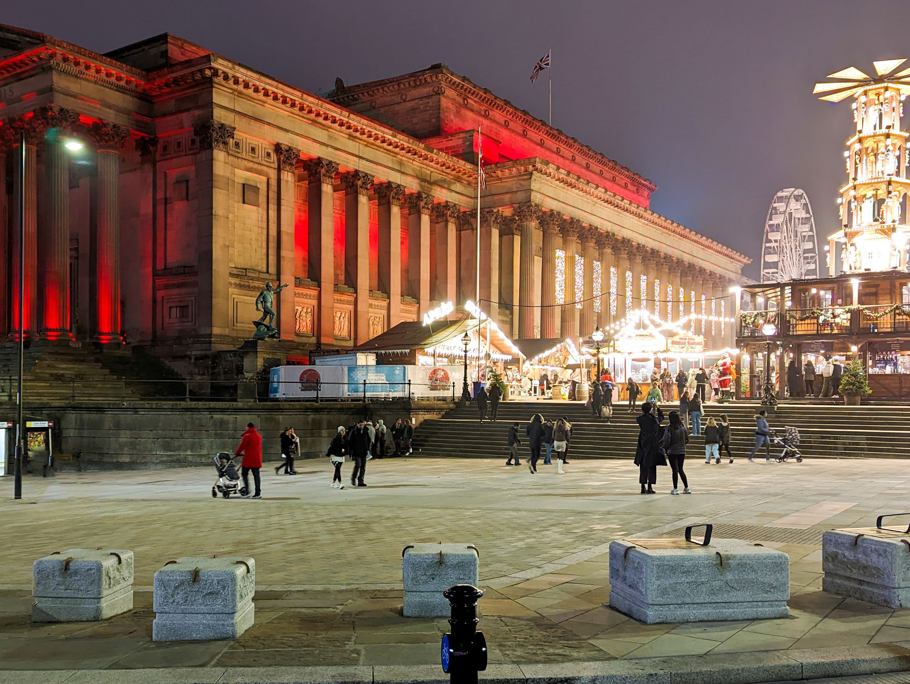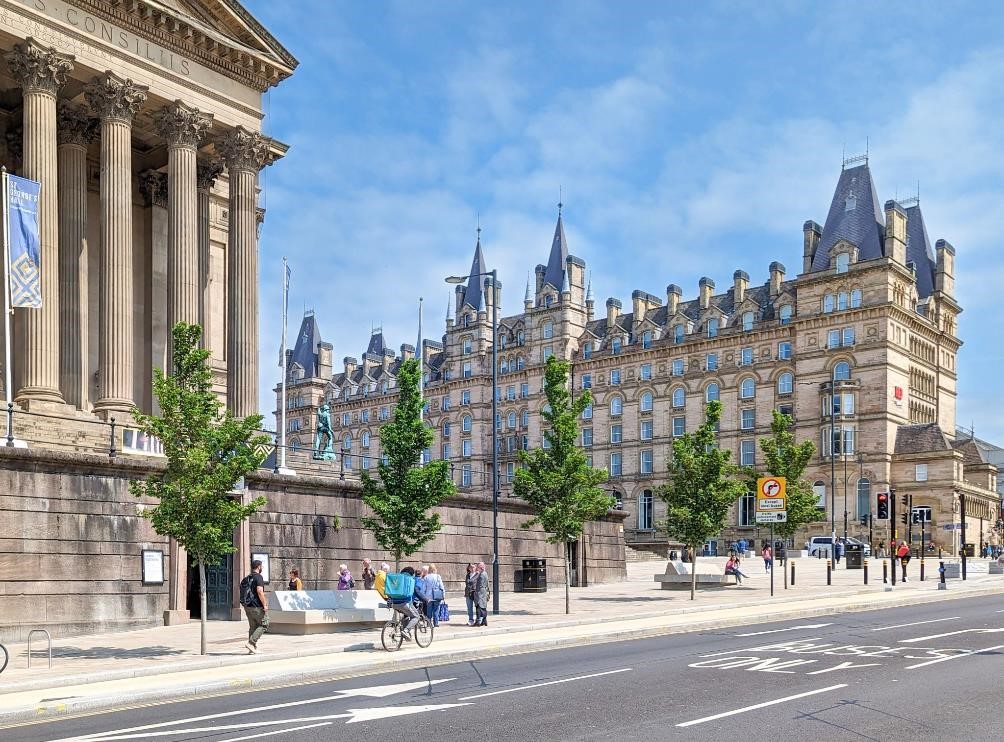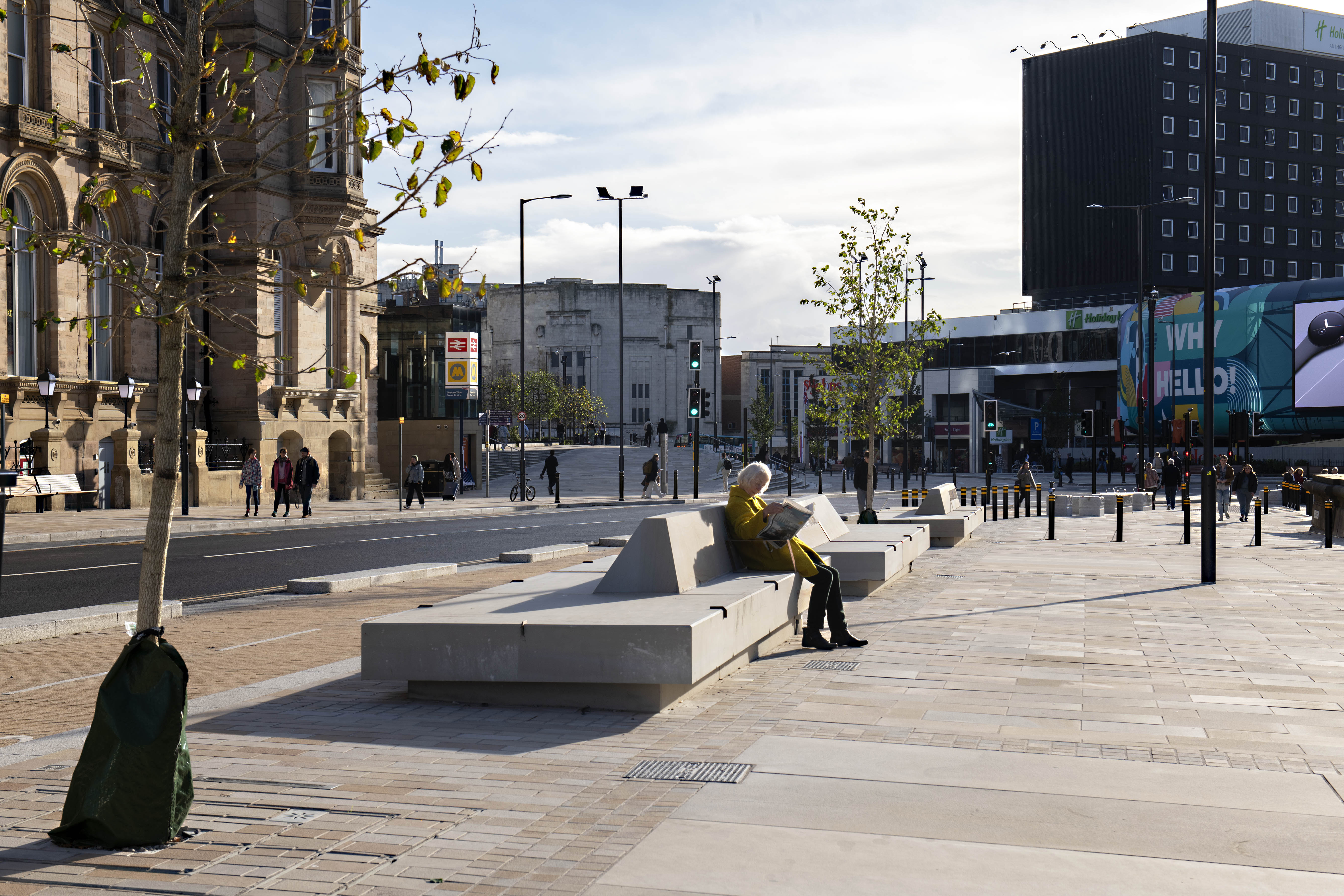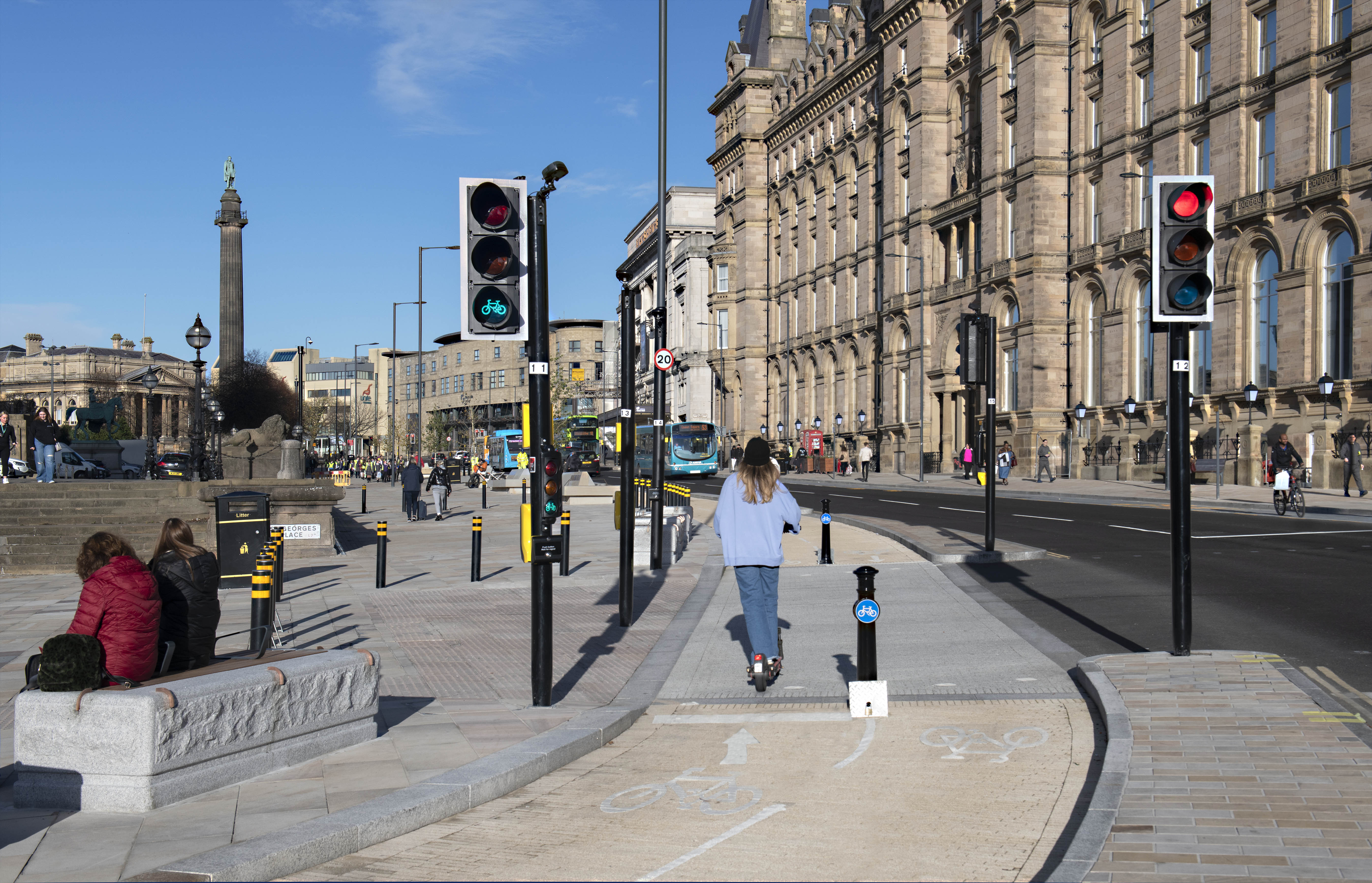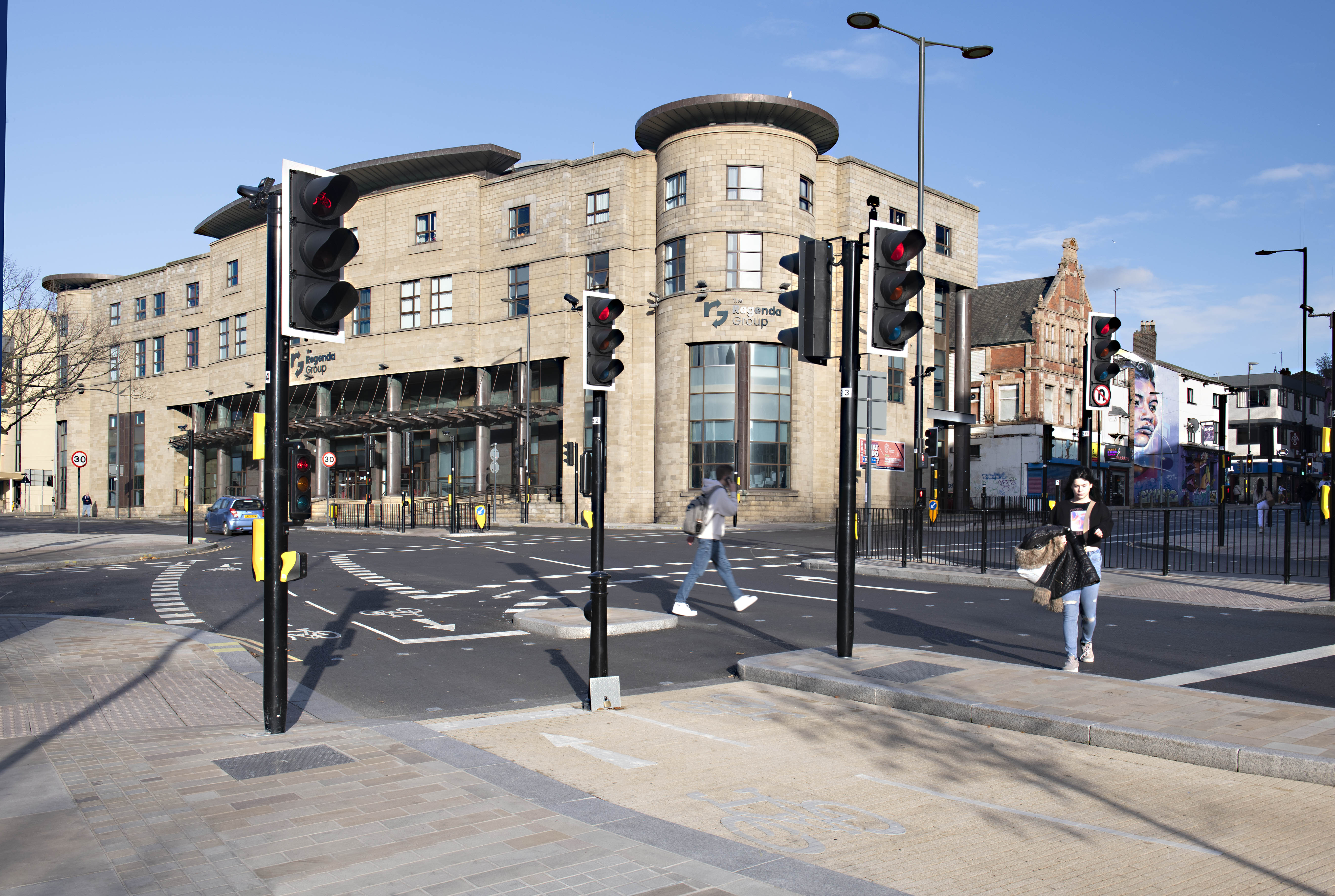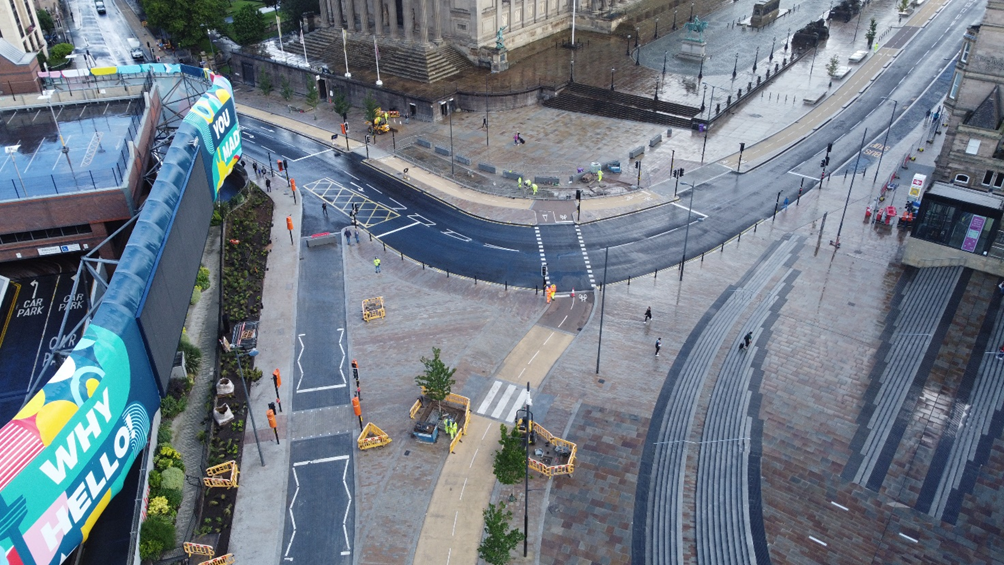Active travel
Since the scheme has opened, early indications show an increase in cycling along Lime Street (approximately 10%). It is expected this number will increase as the scheme has spurred further investment in Liverpool’s cycling infrastructure, with a further £16 million to be invested into 13 walking and cycling schemes across Liverpool, Sefton, Knowsley, Wirral, Halton, and St. Helens, ultimately creating a safe environment for cycling across the city.
Business case
The business case, which our team prepared and submitted to the Department for Transport, outlined several strategic aims for the project. These objectives encompassed the following: improving pedestrian connectivity within the city, managing traffic flow in the city centre, establishing appealing, safe, and direct cycling routes, and enhancing the efficiency of bus movements. The scheme exceeded expectations by delivering impressive results, including the creation of a new world-class public space and a gateway into Liverpool, accompanied by “best in class” provisions for active travel.
Economic benefits
Liverpool City Council’s aim is to boost transport links to further fuel Liverpool’s international appeal to investors, shoppers, and tourists with its visitor economy, currently valued at £3.6bn/year and expected to grow by 25% over the next 10 years. Previously, Lime Street was used for events, but it was not well suited to this due to the poor-quality public realm and dominance of cars in the area. Since opening, Lime Street has hosted several events, including a Remembrance Day parade in November 2022 and a Christmas market in December 2022. It is expected that Lime Street will be a hub for future events, generating economic benefits for the surrounding area and the city.
Net zero
Liverpool City Council’s Climate Change Emergency Declaration aims for Liverpool to be a zero-carbon authority by 2030. The scheme provides the facilities to encourage end-users to adopt more sustainable modes of travel and promote “modal shift.” This scheme provides safe and attractive facilities for cyclists that connect to the wider city centre cycle network of cycle lanes, allowing users to travel right across Liverpool via the new facilities at Lime Street.
Additional street trees and the new sustainable drainage system will further help reduce the city’s carbon footprint and address the impacts of climate change. During construction, we used multiple techniques, opting for low-carbon solutions, including the re-use of recycled material where possible. These measures contributed to the overall reduction of waste and minimised the procurement of new materials.
Placemaking
UN SDG 11 aims to make cities more inclusive, safe, resilient, and sustainable. This includes an objective to provide “universal access to safe, inclusive, and accessible green and public spaces.” The Lime Street project has resulted in more space to host public events, a streetscape that celebrates our art, culture and history, and a landscape fitting for the St. Georges Quarter. Since opening the scheme, the extended plateau at St. George’s Hall has successfully hosted several events, including Remembrance Day and the annual Christmas Market.
Road safety
Traffic has been significantly reduced along Lime Street because of the reduction of the number of lanes from six to two. In 2019, the AADT on Lime Street was 9,218. This has been reduced significantly post-scheme implementation, with traffic on Lime Street being restricted to buses and coaches only. The area was also previously well known for congestion, which is no longer the case. Collisions in the area surrounding Lime Street have also dramatically reduced since the scheme opened, with no collisions since the scheme opened.
The scheme has resulted in a much safer environment for pedestrians by reducing car dominance. Wider, improved pavements and simplified crossings make it much easier to get about safely. The fully segregated cycle lane provided in the scheme is a much safer facility for cyclists traversing the city. Linked to UN SDG 10, the area is also a much more inclusive environment with fully segregated facilities for pedestrians and cyclists. This makes the environment much safer for those with mobility or visual impairments, eliminating street clutter and creating wide, safe footways.
Social benefits
The construction phase of the project utilised local suppliers and contractors, creating new jobs for local people, including numerous apprenticeships. Our team undertook social involvement days in local schools, explaining the Lime Street project and helping promote the construction industry, with the contractor donating IT equipment.
Sustainability
The scheme impressively delivers against five of the UN Sustainable Development Goals (SDGs). These are SDG 3 (good health and well-being), SDG 8 (decent work and economic growth), SDG 10 (reduced inequalities), SDG 11 (sustainable cities and communities), and SDG 13 (climate action).
As part of the scheme, a permanent air quality monitoring station has been installed on Lime Street. Since the scheme opened, this has demonstrated a good improvement in air quality. By planting 32 street trees, this has increased the biodiversity in St. George’s Quarter. The new sustainable drainage system attenuates and treats storm water, reducing the impact of potential flooding and poor water quality downstream. During construction, opting for low-carbon solutions resulted in the re-use of 11,000 metric tonnes of recycled material.
Overall, the Lime Street project showcases the harmonious integration of engineering and architecture to address the challenges facing society today while always complimenting and valuing our local heritage.
